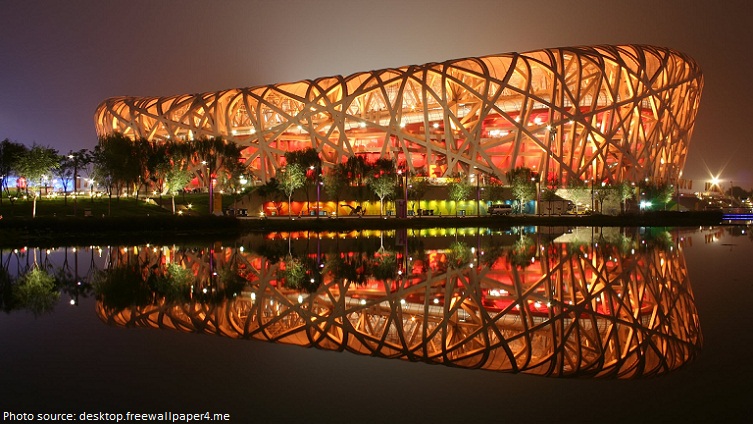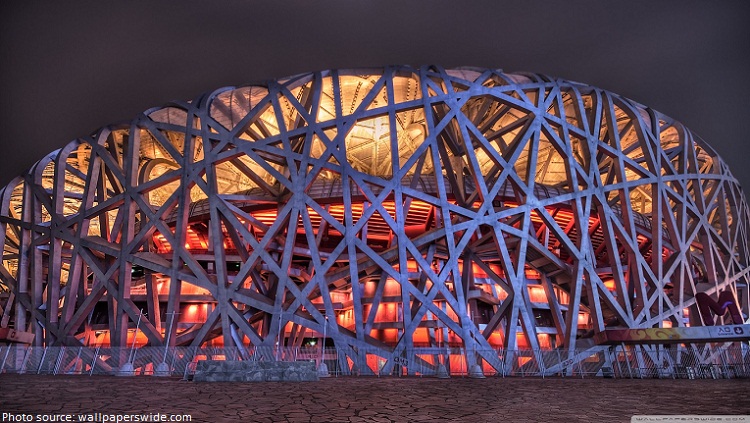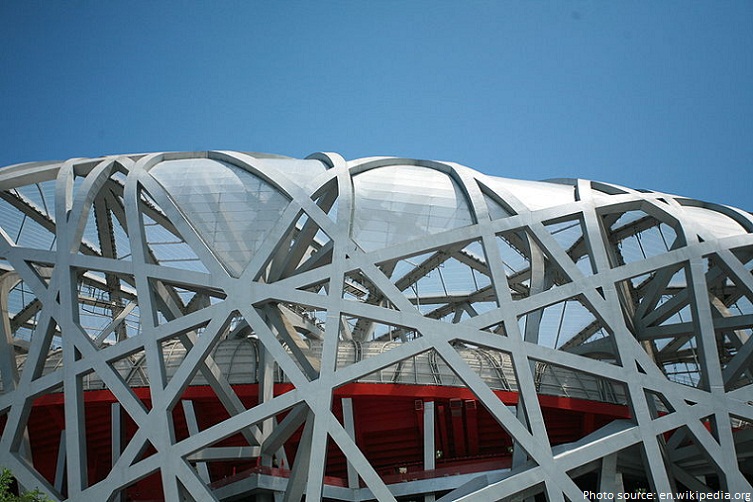Beijing National Stadium, officially the National Stadium, also known as the Bird’s Nest , is a stadium in Beijing.
The stadium was a joint venture among architects Jacques Herzog and Pierre de Meuron of Herzog & de Meuron, project architect Stefan Marbach, artist Ai Weiwei, and CADG which was led by chief architect Li Xinggang.
The stadium was designed for use throughout the 2008 Summer Olympics and Paralympics and will be used again in the 2022 Winter Olympics and Paralympics.
During Beijing Olympic Games, the opening ceremony, the closing ceremony, athletics, football and some other events were held in the Bird’s Nest.
Occupying 258,000 square meters and seating 91,000 people including 80,000 permanent seats and 11,000 temporary seats with the international standard.
It was built with 36 kilometers (22 miles) of unwrapped steel, with a combined weight of 49,600 tons.
The Bird’s Nest is approximately 333 meters (1092 feet) long from north to south and 296 meters (971 feet) wide from east to west, with the highest point of 68.5 meters (225 feet) and the lowest point of 42.8 meters (140 feet).
The steel structure of the National Stadium is one of the world’s sports buildings with the largest span.
The maintenance structure of its rooftop is a double membrane structure covered on the steel structure.
The construction adopts advanced energy conservation design and environmental protection measures, including favorable natural ventilation, natural lighting, the entire recycling of rainwater, the use of renewable geothermal energy resources and the use of solar photovoltaic power generation technology.
Beneath the football field, there are 312 Ground Source Heat Pump system wells which can supply heat (from the earth) to the stadium in winters and supply cold (from the earth) to the stadium in winters by burying heat exchange tube beneath, which saves much electric power.
The rainwater collected by the system of recycling rainwater on the top of the stadium can be used to afforest, flush toilets, control fire or flush the runway, which can save much water resources. Thus, the Bird’s Nest is known as a large Green Building without any doubt.
Located at the Olympic Green, the stadium cost about $428 million.
The building’s dynamic form and vast scale create a new icon for China and the city of Beijing.
The circular shape of the stadium represents ‘heaven‘.
The structural form of the stadium is popularly described as a ‘bird’s nest‘, with its pattern inspired by Chinese-style ‘crazed pottery‘. Seemingly random, the pattern abides by complex rules for which advanced geometry was defined
The stadium is currently used mostly for football matches.
As Beijing is located in one of the world’s most active seismic zones, Arup used advanced seismic analysis to test the stadium under various earthquake conditions and ensure that the structure can withstand major shocks.
The stadium will be used for the opening and closing ceremonies of 2022 Winter Olympics. It will be the only stadium to host both the Summer and Winter Olympics and Paralympics opening ceremonies.
In spite of the lack of significant events, the stadium appears to be quite profitable, drawing some 20,000 to 30,000 people a day at the price of a 50 yuan (about $8) admission.
In June 2014, DreamWorks’ ‘How To Train Your Dragon Live Spectacular’ opened in a 4,000 seat theatre built on land owned by the Beijing National Stadium.



